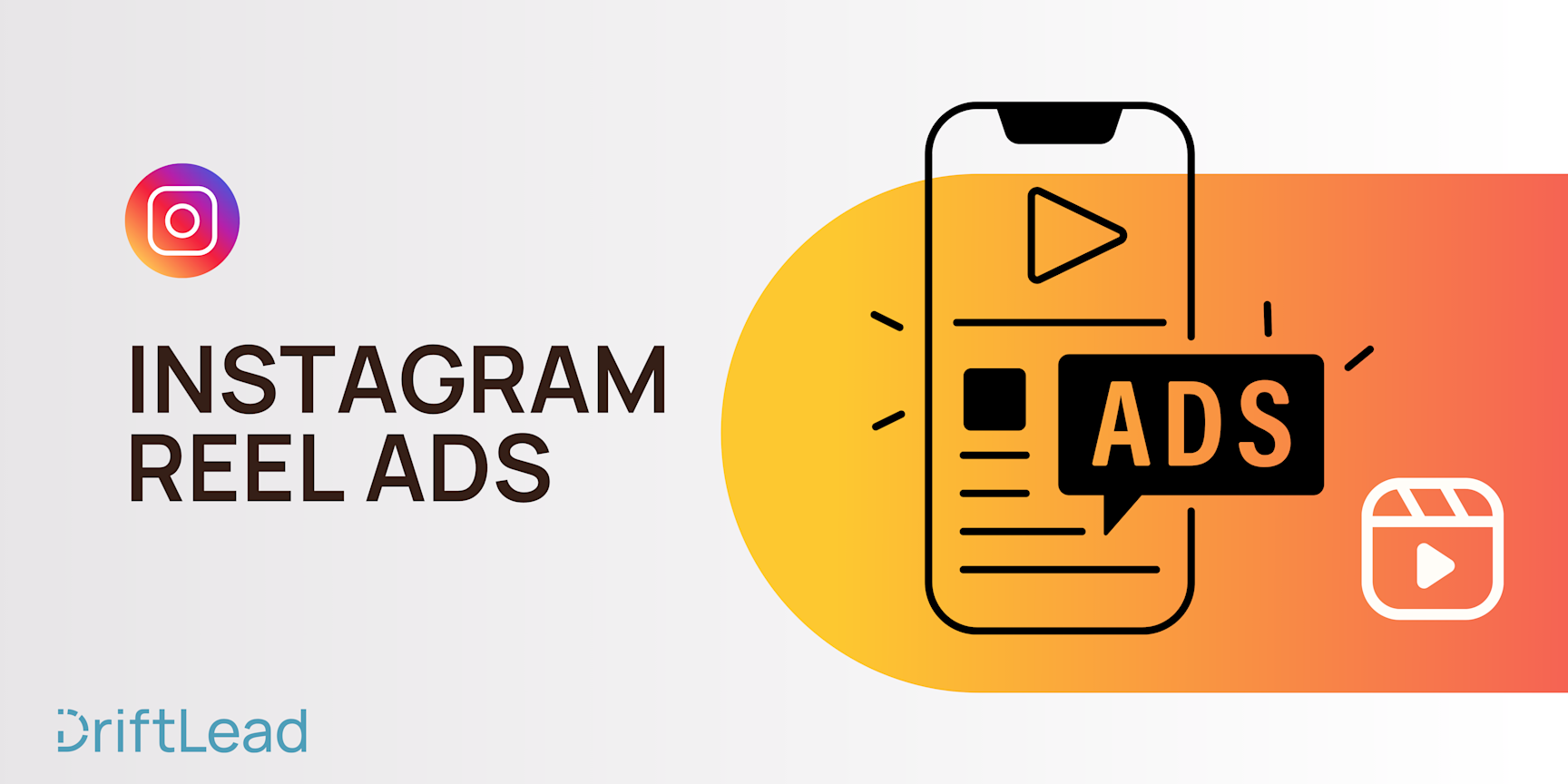What is a CPA in Google Ads and How to Use It For Smarter Advertising.
30 Aug, 2023
Learn the ins and outs of Cost Per Action (CPA) in Google Ads in our comprehensive guide. From understanding CPA to setting up and optimizing your campaigns, this is your roadmap to smarter advertising
Jump to:
#ppc
Hop on our weekly newsletter train! We're sharing tips so stellar, we're practically job-threatening ourselves!
So you've been playing around with Google Ads, and maybe you've even successfully linked it with Google Analytics (high-five if you did). But now you're staring at your dashboard, and it's like you're looking at the Matrix. Numbers, graphs, acronyms—oh my! Ever wondered what CPA stands for? No, it's not Certified Public Accountant in this context, although, let's be real, you may need some serious accounting skills to manage your ad spend effectively.
CPA—Cost Per Acquisition—is the Gandalf of your Google Ads metrics. It guides you through the dark forest of ad spend, helping you understand exactly how much you're paying to acquire a new customer. Don't worry; you shall pass... this class in Google Ads wizardry.
In today's guide, we'll unravel the mystery of CPA, teach you how to set it up, and even share some pro-tips for optimization. So sit back, grab your beverage of choice (no judgment if it's already wine o'clock), and let's get this CPA party started!
What is CPA? A Mini Glossary 📖
Ah, the digital marketing world loves acronyms almost as much as a teen loves texting in shorthand. LOL. BRB. OMG. CPA. One of these is not like the others—but it's equally, or arguably more important, at least if you're running ads.
So what is CPA, you ask? Cost Per Acquisition (or sometimes Cost Per Action, because why make things easy?) is a metric that helps you measure the bang you're getting for your advertising buck.
Let's simplify it. Imagine you're dating, and you go on a series of dinners, movies, and awkward walks in the park. Finally, you reach that magical moment—your date is willing to be "Facebook Official." Now, all those dinners and movies had a cost, and that shiny Facebook status is your acquisition. In a similar vein, CPA tells you how much you're spending to get a customer to perform a desired action, like making a purchase or filling out a contact form.
In even simpler terms, CPA = (Total Cost of Campaign) / (Number of Conversions). It's the Taylor Swift of metrics—always giving you the narrative, even when it's a breakup song about overspending. 🎶
Why Should You Care About CPA? 💡
So you might be wondering, "Why should I care about CPA? It may seem like another acronym you have to memorize alongside CTR and ROAS?" Well, you're not wrong about the alphabet soup, but CPA is a little like the special sauce in your marketing Big Mac—or rather, your In-'N-Out burger—that ties everything together and makes it oh-so-delicious.
ROAS' BFF 🤝
While ROAS (Return on Ad Spend) tells you the general profitability of your campaigns, CPA gives you the nitty-gritty on each individual acquisition. It helps you pinpoint exactly how much you're spending to get a customer to make a purchase or fill out that inquiry form. Knowing your CPA helps you allocate your budget like a pro, meaning more 💰 in your pocket at the end of the day.
Fine-Tune Your Strategy 🎯
Think of CPA as your campaign's personal trainer—it spots the weaknesses and helps you make gains. Are you spending too much to acquire customers who aren't all that valuable? Time to reassess. Or maybe you're under-spending on a highly profitable audience? Double down! Understanding your CPA can guide you in making smarter decisions, fine-tuning your strategy like a Stradivarius violin.
Master the Ad Auction 🎲
In the game of Google Ads, you either win the ad auction or you don't show at all. Knowing your CPA can help you bid smarter, not harder. By grasping what you can afford to pay for a customer and still make a profit, you're setting yourself up as the Bobby Fischer of ad auctions. Checkmate!
Avoid Digital Marketing Darwinism 🦖
In the ever-evolving landscape of digital advertising, the "survival of the fittest" rule applies. Being unaware of your CPA is akin to navigating the jungle without a compass—you might survive, but you're making it unnecessarily hard for yourself. Monitoring your CPA helps you adapt, refine, and thrive in the competitive jungle out there.
Overall Business Health Checkup 🌡️
Lastly, CPA isn't just a marketing metric; it's a pulse on the health of your business. If your CPA is too high relative to the lifetime value of a customer, it's like a siren going off, alerting you to unsustainable business practices.
CPA vs CPC, CPM: What's the Difference? 🤔
If digital marketing were a buddy comedy, CPA, CPC, and CPM would be the trio everyone's talking about. They're the Harry, Ron, and Hermione of your advertising metrics. But just like our wizarding trio, each one has unique qualities that make them indispensable, and confusing them could lead to some...mishaps. So let's break it down.
CPA (Cost Per Acquisition) 🎣
Let's start with our star of the day, CPA or Cost Per Acquisition. This guy's your finish line, the end goal. CPA tells you how much it costs to acquire a customer who takes a specific action, like making a purchase or signing up for a newsletter. This is the metric that keeps your cash flow in check, making sure you're not spending more on acquiring customers than they're actually worth to your business.
CPC (Cost Per Click) 🖱️
Next up is another cost-related acronym—although completely different than the prior. CPC, or Cost Per Click takes things a level higher in the funnel. Imagine you're throwing a party. CPC would be the cost of inviting someone to come through the door. It's the amount you pay each time someone clicks on your ad. While this metric gives you valuable info about the initial engagement with your ads, it doesn't tell you what happens after that click. Does the click lead to a sale, or does the visitor leave without taking action? CPC won't spill those beans; it leaves that to CPA and other metrics.
CPM (Cost Per Mille or Cost Per Thousand Impressions) 👀
Last but not least, CPM, which stands for Cost Per Mille. If you skipped out on those college Latin classes, that stands for Cost Per Thousand Impressions. If CPC is the cost of the invite to your party, CPM is like posting a flyer in a busy intersection—lots of eyes, but not everyone's coming to the bash. It's how much you pay for a thousand views of your ad, whether or not they lead to clicks or conversions. This is often used for brand awareness campaigns where the goal is to be seen, not necessarily to drive immediate action.
A recap🛠️
CPA: Measures the cost efficiency of conversion, helping you understand the ROI of your ad campaigns.
CPC: Measures the cost efficiency of customer engagement, telling you how much it costs to get potential customers to your landing page.
CPM: Measures the cost efficiency of visibility, often used in campaigns where reaching a broad audience is more important than driving specific actions.
The Perfect Blend ☕
In the grand marketing scheme, you'll likely use all three metrics together. CPC helps you understand the front-end of your customer acquisition funnel. CPM is the guy you go to when you're more focused on exposure than immediate action. And CPA tells you if all that exposure and engagement is actually leading to conversions that make sense financially.
Setting Up CPA Bidding in Google Ads: A Step-by-Step Guide 🛠️
Consider this your "hitchhiker's guide" to setting up CPA bidding, minus the intergalactic travel and alien encounters. Unless you're into that sort of thing, in which case, "Don't Panic" and carry on reading
Step 1: Make Sure You're Eligible 📋
Before you jump into the settings, you need to check if your account is eligible for CPA bidding. To use Target CPA bidding, you'll need:
A Google Ads account with conversion tracking enabled.
At least 30 conversions in the last 30 days for the campaign you're going to set this up for. Your "Google" reps will tell you not to worry about this, but we'd advise otherwise...you should have the conversion data in there before giving Google your budget to run with.
Step 2: Log In and Navigate to Your Campaign 🖱️
Log into your Google Ads account.
Click on "Campaigns" on the left sidebar.
Navigate to the campaign where you wish to implement CPA bidding.
Step 3: Edit Bidding Strategy 🛠️
Once inside the campaign, click on "Settings."
Scroll down to the "Bidding" section.
Click on "Change bid strategy," and select "Target CPA" from the dropdown menu.
Step 4: Set Your Target CPA 🎯
After selecting "Target CPA," you'll be prompted to set your target CPA amount. This is the average amount you'd like to pay for a conversion.
Enter your desired amount (more on this later)
Step 5: Advanced Options (Optional) 🤓
You can also adjust "Advanced Options" like "Device Adjustments," which lets you set different CPAs for different devices.
Another option is to limit your "Max. CPC" to avoid too high a cost for a single click.
Step 6: Save and Review 🔄
Click "Save" to implement your new bid strategy.
It's a good practice to review the performance after a week or two to make sure you're hitting your target CPA.
Step 7: Fine-Tune 🎛️
After monitoring performance, you might need to adjust your target CPA or revisit other advanced settings to fine-tune your campaign.
Pro Tips 💡
Start Conservative: If you're new to CPA bidding, it might be a good idea to start with a conservative amount and gradually experiment from there.
Keep an Eye on Volume: Extremely low CPA might lead to fewer conversions. Balance is key!
Seasonal Adjustments: Be prepared to adjust your CPA targets for seasonal fluctuations in customer behavior.
And there you go! You're now an unofficial CPA bidding Jedi. May the conversions be ever in your favor! 🌟
How to Determine Your Optimal Bidding CPA
Finding the right CPA can feel like chasing a golden snitch—it’s elusive, moves rapidly, and everyone’s after it. But fear not! Determining your optimal CPA doesn’t require a degree from Hogwarts, just some good old-fashioned data analysis (and maybe a dash of magic from your marketing wand).
Understand Your Customer Lifetime Value (CLV) 📈
The first step in determining your optimal CPA is understanding your Customer Lifetime Value, or CLV. This is the total value a customer contributes to your business over their entire life cycle.
Quick Formula: Average purchase value x Frequency of purchase per year x Customer lifespan in years = CLV.
Factor in Gross Margins 💰
You need to know how much net profit you make from each customer after all costs—goods sold, operating expenses, etc. Your CPA should be a fraction of this number to ensure profitability.
Analyze Past Campaign Data 📊
Low CPA: Did a low CPA result in poor quality leads or low conversions?
High CPA: Were these leads more qualified and led to a higher customer lifetime value?
Experiment and Test 🧪
Start testing different CPA bids for various campaigns to compare results. Look for:
Quantity and Quality of Conversions: Are you getting enough conversions to meet your goals? Are these conversions valuable?
ROI: Are the conversions you're getting providing a return that justifies the CPA spend?
A/B Testing 🔀
Never underestimate the power of A/B testing. Create variants with different CPAs and see which one yields better results for your specific goals.
Cost vs. Volume vs. Quality 3D Chart 📦
Imagine a 3D chart where one axis represents Cost, the second represents Volume, and the third represents Quality. Your optimal CPA would be where all three axes meet in a harmonious balance. Ah, Zen and the Art of CPA Management.
Periodic Reviews 🔄
The landscape is always changing. Regularly review and adjust your CPA bids based on new data and performance metrics.
Consult the Oracle (a.k.a Google Analytics) 🌐
Keep an eye on metrics like bounce rate, time spent on site, and pages visited post-click to judge the quality of the traffic you're getting at different CPA levels.
Pro Tips: How to Optimize Your CPA 🚀
So you’ve discovered your optimal CPA and you're thinking, "What's next? Do I get a trophy? A certificate? A parade in my honor?" Unfortunately, the answer is none of the above. What you do get is a profitable and successful ad campaign. Here are some pro-level hacks to continually fine-tune your CPA for peak performance:
1. The Keyword is King 👑
Make sure you’re bidding on the right keywords. Use long-tail keywords to target specific, relevant audiences and improve the likelihood of conversion.
2. Quality Over Quantity 🌟
Optimize your Quality Score by improving ad relevance, landing page experience, and CTR. A higher Quality Score can result in a lower CPA.
3. Audience Segmentation 🎯
Break down your audience into specific segments based on behavior, location, age, etc. This enables you to set different CPA goals for different demographics.
4. Geo-Targeting 🌍
If your business is location-specific, concentrate your efforts and budget on that particular region. Fish where the fish are, not in the middle of a desert.
5. Retargeting but Right 🔄
Don't bombard users with ads; instead, carefully schedule your retargeting to improve visibility without being annoying. This can significantly lower CPA.
6. Dynamic Ads 🎨
Dynamic ads automatically change based on user behavior and history. These can be more effective than static ads in driving conversions.
7. Mobile Matters 📱
In an increasingly mobile world, optimizing for mobile conversions is no longer optional. Faster load times, easy navigation, and mobile-optimized content can help decrease your mobile CPA.
8. Time Matters ⏰
Run your campaigns during the hours and days that have shown to be most effective for conversions. This is known as ad scheduling or dayparting.
9. Automate, but Wisely 🤖
Utilize machine learning and AI algorithms for automated bidding, but keep an eye on them. They’re smart but not infallible.
10. Keep Learning 📚
The digital advertising landscape is ever-changing. Stay updated on industry trends and new optimization techniques to keep your CPA game strong.
Congratulations, you've graduated from the School of CPA. With these pro tips, you’re well on your way to becoming a CPA wizard, minus the wand and robe—unless you want to wear them, we're not judging. 🌟
Common Pitfalls and How to Avoid Them 🚫
Ah, the slippery slopes of CPA. They might look innocent enough, but one false step can have you tumbling down faster than you can say "unoptimized campaign." But fear not, intrepid marketer! Here are some common pitfalls and how you can artfully sidestep them:
1. Setting Unrealistic CPA Goals 🌈
The Pitfall: Everyone wants to achieve the highest ROI with the lowest CPA, but setting unrealistic targets can backfire.
How to Avoid: Always base your CPA goals on historical data and industry benchmarks. Don't shoot for the stars when your rocket is still in the prototype phase.
2. Ignoring Conversion Tracking 🚷
The Pitfall: If you're not tracking conversions properly, you're essentially flying blind.
How to Avoid: Use reliable tools to track conversions, from the click to the checkout. Make sure to check the tracking setup periodically.
3. Poorly Designed Landing Pages 🎭
The Pitfall: Even the best ads can't save you if your landing page is confusing or irrelevant.
How to Avoid: A/B test different landing page elements and designs. Make sure it aligns well with the ad and the target audience's expectations.
4. Overlooking Ad Placement 🌐
The Pitfall: Not all ad placements are created equal. Poorly chosen placements can skyrocket your CPA.
How to Avoid: Review placement reports regularly and exclude underperforming websites or platforms.
5. Neglecting Mobile Users 📵
The Pitfall: With the increasing number of mobile users, ignoring mobile optimization can be a costly mistake.
How to Avoid: Always test how your ads and landing pages perform on mobile devices. Optimize accordingly.
6. Being Too Broad or Too Narrow 🔍
The Pitfall: Targeting too broadly can bring irrelevant traffic, while targeting too narrowly can limit your reach.
How to Avoid: Use data analytics to find the sweet spot in audience targeting. Adjust your strategies based on performance metrics.
7. Sticking to Outdated Practices 🕰️
The Pitfall: What worked yesterday may not work today.
How to Avoid: Stay updated with industry trends, new tools, and best practices. Don't let your campaigns grow stale. (Ahem...our blog is a great place to start)
8. Ignoring Seasonal Trends ❄️🌸☀️🍂
The Pitfall: Seasons change, and so do consumer behaviors.
How to Avoid: Adapt your CPA strategies to account for seasonal trends and events that may affect your target audience’s behavior.
9. Failing to Test and Iterate 🔄
The Pitfall: Stagnation is the enemy of optimization.
How to Avoid: Continuously A/B test various elements of your campaigns. Learn from each test and iterate for improvement.
FAQs: Your CPA Questions, Answered 🤓
At this point, you're probably CPA-savvy enough to impress a barista at a Silicon Valley coffee shop. But hey, we all have lingering questions. Here are some of the most frequently asked questions about CPA, along with answers so clear, they'll turn you into the CPA guru you never knew you wanted to be.
1. What is a good CPA?
Answer: Ah, the age-old question! A "good" CPA varies by industry, campaign, and business goals. You'll need to consider factors like profit margin, lifetime value of a customer, and what you're actually gaining from a conversion.
2. Why is my CPA so high?
Answer: A high CPA can be due to several reasons—poorly optimized campaigns, incorrect targeting, or non-converting landing pages, among others. Your best bet is to diagnose the issue using analytics and optimize accordingly.
3. Can CPA be zero?
Answer: Technically, yes, but a CPA of zero usually means something's not right. Either you're not tracking conversions correctly, or you've just stumbled upon the philosopher's stone of advertising. Spoiler alert: It's probably the former.
4. Is lower CPA always better?
Answer: Not necessarily. A lower CPA is generally good, but if you’re sacrificing quality or volume of conversions to achieve it, then you may not be helping your overall business objectives.
5. How often should I review my CPA?
Answer: At a minimum, you should be reviewing your CPA weekly to make adjustments. However, if you're running high-budget, high-stakes campaigns, you'll want to monitor it more frequently.
6. How does CPA relate to ROI?
Answer: CPA and ROI are intertwined. A lower CPA usually means a higher ROI, assuming you're maintaining the same conversion rate and value per conversion.
7. Is CPA applicable for all types of campaigns?
Answer: CPA is most commonly associated with paid advertising campaigns. It's not typically used for organic, SEO-driven efforts or brand awareness campaigns that don't have a direct conversion goal.
8. What’s the difference between CPA and Cost Per Lead (CPL)?
Answer: While CPA focuses on the cost for an actual customer action (like a sale), CPL is concerned with generating a potential customer or "lead." Leads may or may not convert into customers.
9. Can I set CPA goals for different stages of the customer journey?
Answer: Absolutely! From awareness to consideration to conversion, you can set different CPA targets for different stages to better align with your overall marketing objectives.
10. How does ad quality affect CPA?
Answer: Better ad quality often results in a lower CPA, as high-quality ads are more likely to attract users who are genuinely interested in what you're offering.
Your CPA Journey Starts Now 🌟
CPA is more than just a performance metric; it's a strategy. A strategy that, when understood and applied correctly, can transform your advertising from a simple cost of doing business into an investment in growth. No matter your industry, product, or target audience, understanding your CPA will give you the key insights needed to scale your business effectively.
If you've stuck with us through this entire guide, kudos to you! You're armed with the knowledge to navigate the CPA waters like a seasoned sailor.
If you want some additional guidance and want to make sure you're getting the most of your digital advertising efforts, request a free marketing plan from us today!






